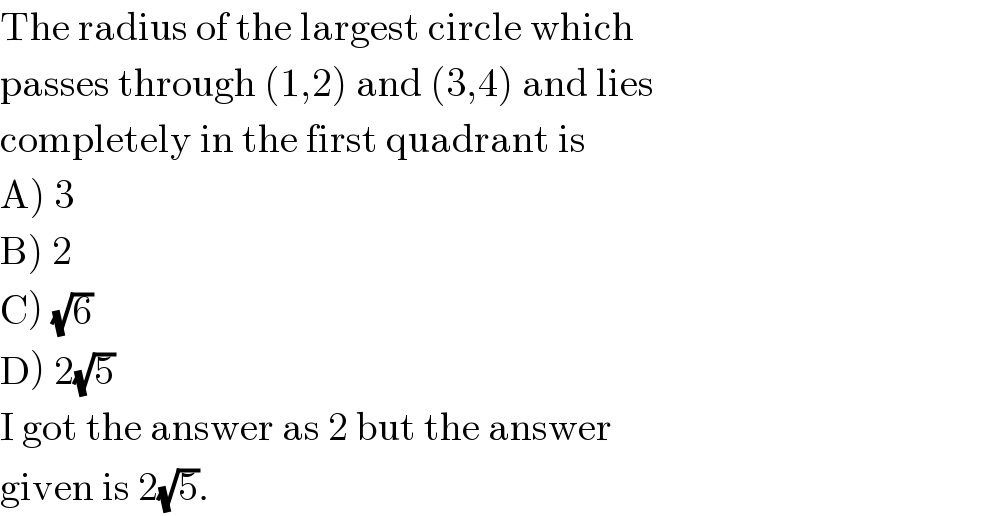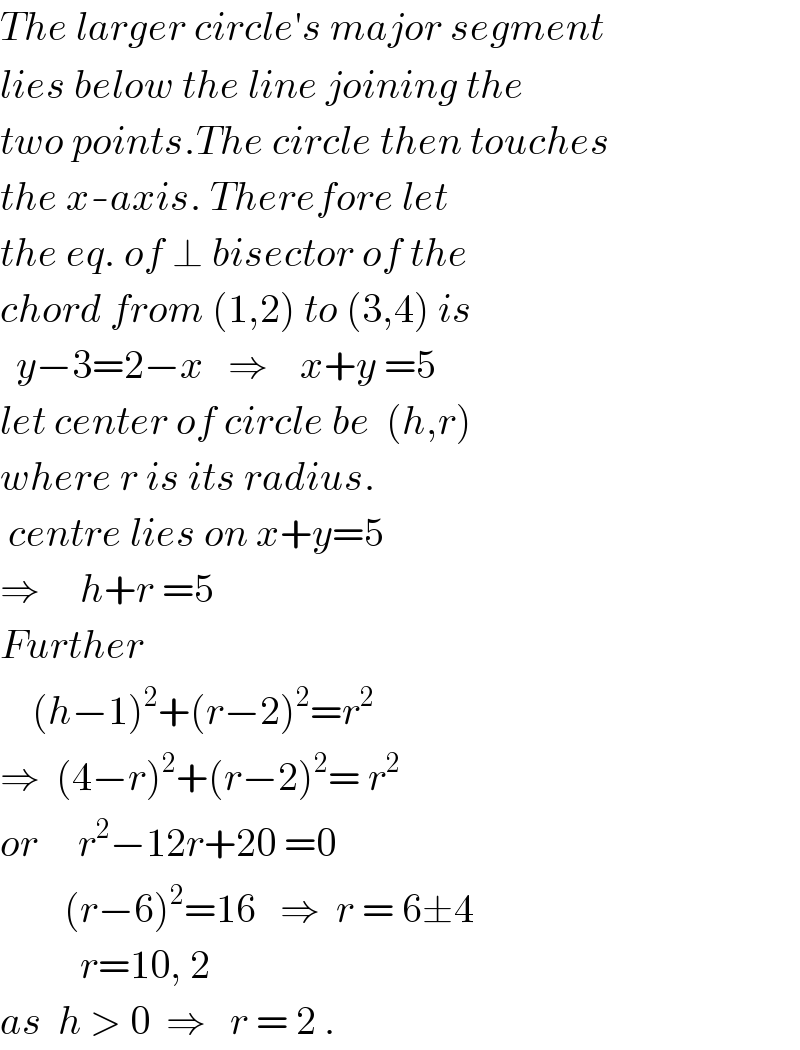
Question and Answers Forum
Question Number 38613 by rish@bh last updated on 27/Jun/18

Answered by ajfour last updated on 27/Jun/18

Commented by rish@bh last updated on 27/Jun/18

Commented by prakash jain last updated on 28/Jun/18

| ||
Question and Answers Forum | ||
Question Number 38613 by rish@bh last updated on 27/Jun/18 | ||
 | ||
Answered by ajfour last updated on 27/Jun/18 | ||
 | ||
| ||
Commented by rish@bh last updated on 27/Jun/18 | ||
 | ||
Commented by prakash jain last updated on 28/Jun/18 | ||
 | ||